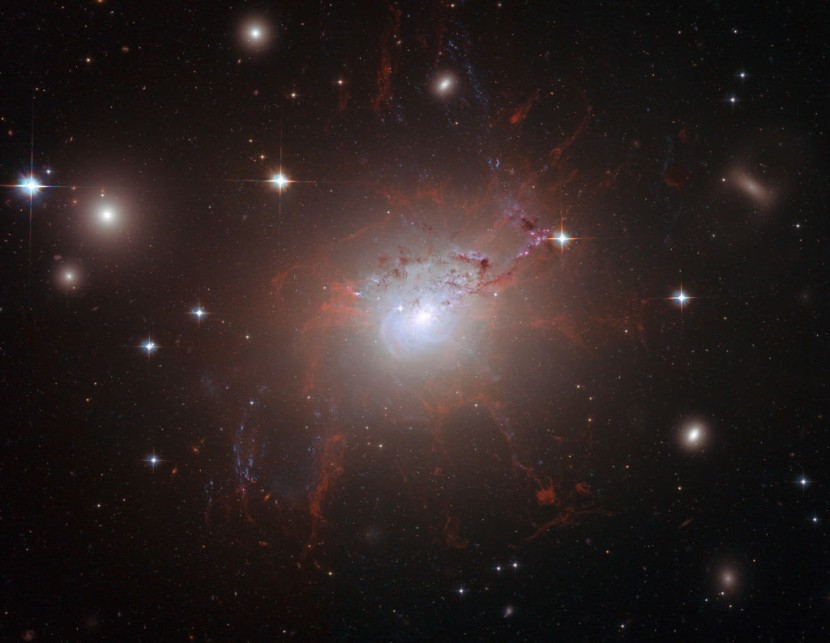
NASA's Hubble Space Telescope has recently discovered the farthest star to ever be seen, but is it also the oldest one?
The stunning view of the most distant individual star has made rounds in the astrology community and is thought to show the cosmic body that existed within the first billion years since the Big Bang.
Farthest Star Ever Seen
The recent finding is a major leap in discovery compared to the previous single-star record holder that Hubble discovered in 2018. At the time, astronomers found a star that existed when the universe was roughly four billion years old.
Astronomers refer to the previous record-holder as "redshift 1.5," which is a term used to reference the "shifting" of light from distant objects as the universe expands. This causes the wavelengths to become longer and redder as they travel toward the Earth.
Hubble is still rewriting the textbooks! 📚
— Hubble (@NASAHubble) April 1, 2022
The telescope observed the farthest individual star ever seen to date, nicknamed Earendel!
Are you a content creator or just want to learn more about this discovery? You can find interviews and b-roll here: https://t.co/jO3V9rPO6y pic.twitter.com/v6OY2771Ti
Experts said that the newly detected star is so far away that it took light 12.9 billion years to reach our planet and was alive when the universe was only 7% of its current age, at redshift 6.2. Astronomers had only previously seen clusters of stars at similar distances while they were embedded inside early galaxies, as per NASA.
Hubble made the discovery as part of its efforts of searching for some of the universe's farthest and oldest galaxies. Astronomers were able to find the star, which has been nicknamed Earendel, by coincidence within one of the galaxies.
A graduate student at John Hopkins University in Baltimore, Brian Welch, who is also an author of a paper published Wednesday in the journal Nature that talked about details of the discovery, said that it was an unexpected surprise to find something so small.
According to the New York Times, more often than not, cosmic objects that are too far from the Earth are too dim to be seen, but Einstein's theory of general relativity, which describes how gravity bends space, helps at times. A massive galaxy cluster nearby can sometimes act as a magnifying glass to amplify light from much more distant stars and galaxies behind to reach our planet.
Oldest Star in the Universe
The name of the new star found means "morning star" or "rising light" in Old English and it could be up to 50 times the mass of our sun and several million times brighter. Victoria Strait, a postdoc at the Cosmic Dawn Center, Copenhagen, who is also a collaborator and co-author of the study, said that old stars provide scientists with a glimpse of the past.
In a press release, she said that peering into the cosmos allows humans to look back in time, with similar extreme high-resolution observations helping experts to understand the building blocks of some of the very first galaxies in the universe, CBS News reported. While Earendel is the farthest star ever seen, it is not the oldest, that title goes to another star named Methuselah. Earlier estimates from 2000 placed the age of the star at roughly 16 billion years old.
Remember Earendel, the farthest star we announced this week? Its distance is the greatest of any individual star seen to date, but it’s not the oldest.
— Hubble (@NASAHubble) April 1, 2022
The oldest known star with a well-determined age is Methuselah, which still exists, while Earendel likely died long ago. pic.twitter.com/3lFRhzPcqm
Related Article:
Argon Gas Trapped in Ice Core From Antarctica Found To Exist in Ancient Earth Atmosphere, Study Says
© 2026 HNGN, All rights reserved. Do not reproduce without permission.








